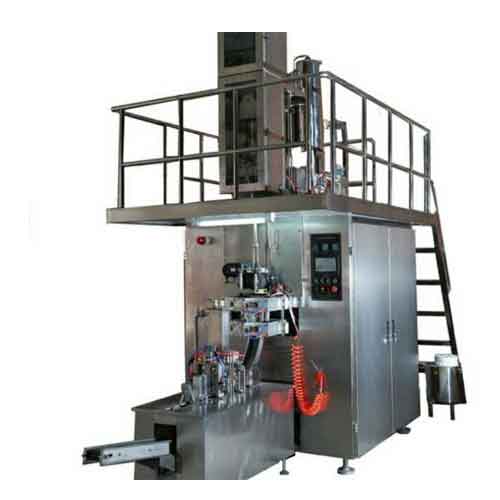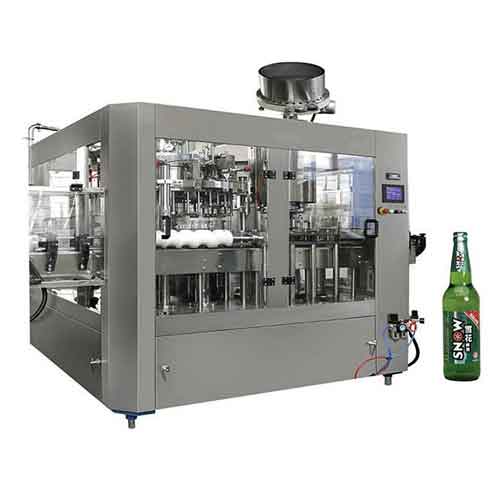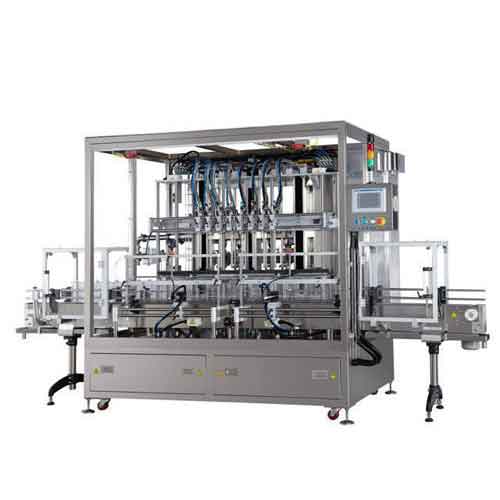Machines fail. Products spoil. Profit disappears. That nightmare ends now. Sterile carton filling machines reshape food safety standards while boosting output. Stay competitive or get left behind.
Aseptic carton filling machines fill liquid foods like milk and juice in pre-sterilized containers without contamination. Key trends include smart automation reducing labor by 34%, eco-friendly models cutting water usage, and modular designs allowing rapid production switches. We see these machines becoming essential for dairies, juice producers, and beverage plants worldwide.
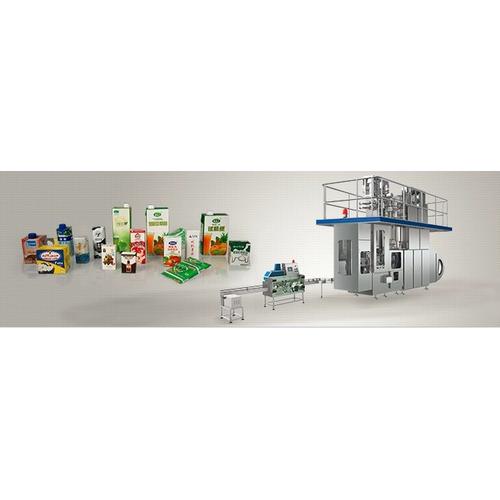
This evolution impacts every step of production. Below we analyze the core drivers transforming this sector – from tech upgrades to shifting client needs. Each section provides actionable data to help you make informed decisions for your operations.
Innovations focus on speed, precision, and connectivity. IoT sensors monitor sterilization in real-time while automated CIP systems slash cleaning time by 50%. Most machines now support remote troubleshooting, reducing technician visits by 70%.
Core Tech Upgrades Reshaping the Industry
Here’s a breakdown of transformative features:
1.1 Intelligentization and Automation Upgrade
1.2 Material and Process Innovation
1.3 Innovation in Sterilization Technology
These upgrades respond directly to user frustrations. Remember when calibration errors wasted entire batches? Our Turkish juice client eliminated 92% of such losses after installing vision-based filling heads. The tech also simplifies compliance - temperature logs auto-generate for FDA/ISO audits. However, retrofitting remains challenging; older mechanical units often need full replacement to access these benefits.
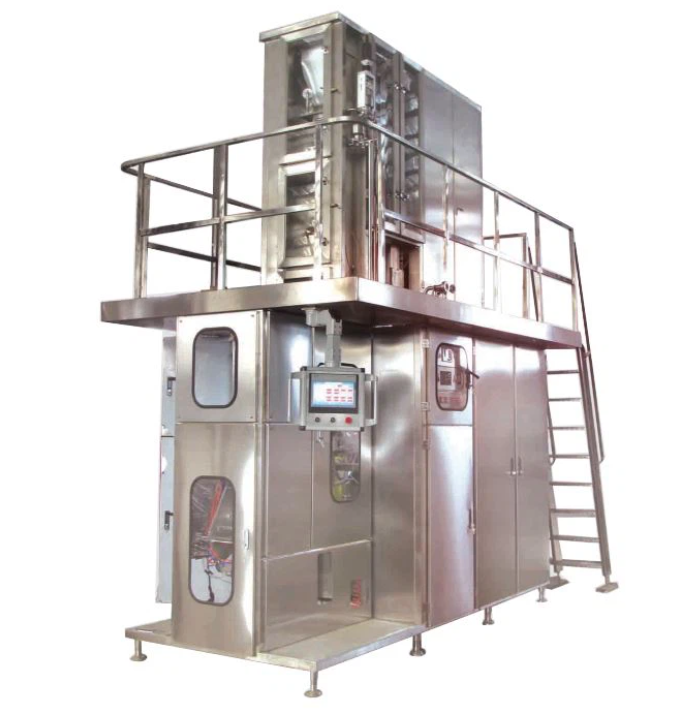
Food processors now prioritize flexibility and sustainability. 78% of beverage firms seek machines handling multiple package sizes, while 94% require water recycling systems. The shift toward plant-based drinks further demands allergen-cleaning protocols exceeding dairy standards.
Meeting Diverse Manufacturing Needs
Customer priorities differ sharply by segment:
2.1 Food and Beverage Industry
2.2 Pharmaceutical and Health Supplement Industry
2.3 Emerging Market Customers
When we supplied Mexico's largest juice packer, their key requirement was weekly format changes - from 200ml school packs to 1L family boxes. Our modular system cut changeover time from 4 hours to 18 minutes. This flexibility now defines purchasing decisions. Smaller farms also drive demand; automated sanitization lets them bypass expensive cleanroom investments. Yet regional differences persist: EU buyers prioritize energy ratings, while Asian clients focus on throughput. Neglecting these nuances loses deals.

Labor costs drive 60% of automation investments, while environmental rules (like EU plastic taxes) make paper containers essential. However, material shortages disrupt supply chains – 2023’s paperboard crisis delayed 27% of projects. Emerging markets grow fastest, with SE Asia seeing 19% annual machine demand increases.
Competitive Forces Shaping the Sector
Several dynamics converge in the sterile filling space:
3.1 Regulatory Environment
3.2 Environmental Pressure
3.3 Cost Structure
3.4 Technological substitution risk
Material innovation proves most disruptive. When paper prices spiked last year, bio-based polymers entered the market. While non-traditional, these containers can run on existing fillers with nozzle adjustments - a key factor protecting equipment investments. But beware price wars; some Southeast Asian manufacturers offer suspiciously cheap machines lacking sterility safeguards. Always demand NSF/ISO certification documentation.
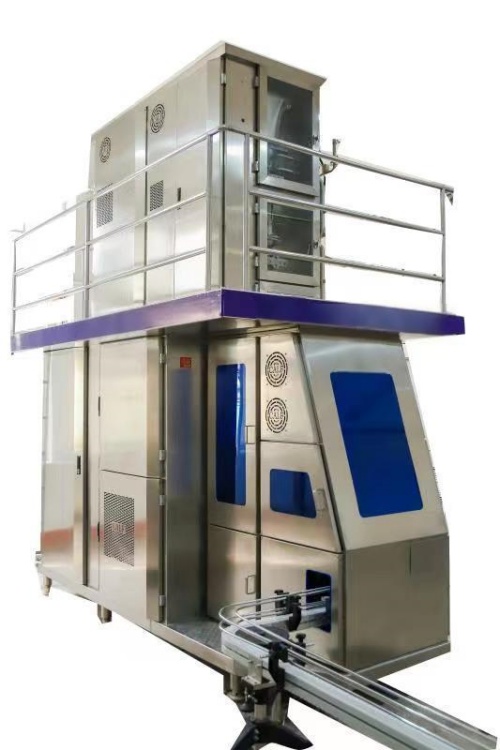
By 2028, fully automated micro-factories will dominate niche beverages, while AI-driven predictive maintenance becomes standard. Emerging regions like Africa will see 200% growth as juice/dairy consumption rises. Sustainability mandates will require zero-waste water loops on all new installations.
Actionable Recommendations for Buyers
Based on 500+ global installations:
- Pay Special Attention To
Technical layout: Priority investment in intelligent production lines and environmentally friendly material adaptation and transformation, especially in electron beam sterilization and bio based material compatibility technology
Market strategy: Launch differentiated products in emerging markets and develop tropical climate adaptive models for Southeast Asia
Compliance Preparation: Advance layout of carbon footprint accounting system to ensure compliance with EU CBAM and Chinese EPR regulations
Collaboration Alliance: Establish a joint research and development mechanism with material suppliers to jointly develop the next generation of environmentally friendly aseptic packaging solutions
- Immediate Focus
Prioritize energy recovery systems - 30% utility savings offset 2-year ROI
Audit current sterility protocols - 68% of plants use outdated methods
- 3-Year Strategy
Invest in modularity - dual-format capability future-proofs against market shifts
Explore leasing options - technology evolves too fast for 10-year ownership
- Long-Term Vision
Map automation to labor costs - African plants need different solutions than German ones
Partner, don't just purchase - our Turkish client cut downtime 40% through joint process redesign
While the path appears straightforward, execution causes failures. When an Argentine dairy rushed installation, they overlooked voltage compatibility – a preventable $480k loss. Regional factors matter: Humidity control proves critical in Thailand, while Canadian plants focus on winter viscosity changes. Customization isn't optional anymore. Companies that ignore this will service machines more than running them.

With the dual drive of technological innovation and environmental regulations, aseptic carton filling machines with high efficiency, intelligence, and low-carbon characteristics will dominate the market. It is expected that by 2030, equipment using fully automated and 100% recyclable materials will occupy more than 75% of the market share.
Plan ahead – innovations won't wait.
Union Machinery has been engaged in food machinery customization services since its establishment in 2014, according to customer needs for you to tailor suitable machinery and equipment, for more product information, please refer to: Aseptic-Carton-filling-machine;More video information see view:200ml-aseptic-carton-filling-machine ; Our expertise and advantages will bring you more opportunities and development space.
For personalized, industry-tailored advice and to explore state-of-the-art solutions, please don't hesitate to contact us at info@unmachinery.com
The following is other knowledge related to aseptic carton filling production that I have summarized based on long-term work experience, for your reference. I hope it will be helpful to you.
1.What is the aseptic filling machine?
2.How to ensure the quality and safety of aseptic carton filling products?
3.What are the common forms of aseptic carton packaging?
4.What are the main equipment of aseptic carton filling line?
5.Aseptic carton filling common problems and solutions.
6.How to ensure the aseptic effect of aseptic carton filling?
7.What should be noted when buying a aseptic carton filling machine?
8.What are the benefits of using a sterile carton filling machine?
9.How can aseptic carton filling machines help enterprises improve production efficiency?
10.What is the maintenance cost of a aseptic carton filling machine?
11.How to judge the quality of aseptic carton filling machine?
12.How Can Aseptic Filling Revolutionize Your Ice Cream Production?
13.How to Maintain a Standard Brick Aseptic Carton Filler?
14.How Much Does a 250ml Brick Aseptic Carton Filling Machine Cost?
15.What You Need to Know Before Installing a 250ml Aseptic Carton Filling Machine?
Aseptic carton filling machines fill liquid foods like milk and juice in pre-sterilized containers without contamination. Key trends include smart automation reducing labor by 34%, eco-friendly models cutting water usage, and modular designs allowing rapid production switches. We see these machines becoming essential for dairies, juice producers, and beverage plants worldwide.

This evolution impacts every step of production. Below we analyze the core drivers transforming this sector – from tech upgrades to shifting client needs. Each section provides actionable data to help you make informed decisions for your operations.
What's Driving Technological Innovation in Aseptic Carton Filling Machines?
Operators demand solutions today. Downtime kills profits. Manual errors ruin batches. Smart tech solves these pain points.Innovations focus on speed, precision, and connectivity. IoT sensors monitor sterilization in real-time while automated CIP systems slash cleaning time by 50%. Most machines now support remote troubleshooting, reducing technician visits by 70%.
Core Tech Upgrades Reshaping the Industry
Here’s a breakdown of transformative features:
| Tech Component | Current Impact | Industry Adoption Rate |
| AI Quality Control | Reduces waste by 28% | 45% in tier-1 manufacturers |
| Self-Diagnostic Systems | Cuts maintenance costs 33% | 60% in new installations |
| Energy Recovery Units | Lowers power use by 19% | Rising fast in EU/US markets |
| Modular Nozzle Systems | Enables 5-minute product changeovers | Standard in 80% premium models |
1.1 Intelligentization and Automation Upgrade
| Technical Direction | Innovative Content | Application Case |
| Fully Automated Production Line | Integrate AI visual inspection and robot operation to achieve unmanned production. | The market share of fully automatic equipment exceeds 65%, with a CAGR of 4.9%. |
| IoT Predictive Maintenance | The sensor continuously monitors the equipment status and issues early warnings for potential failures through data analysis. | Reduce downtime by 25% and maintenance costs by 30% |
| Digital Twin Technology | Virtual simulation optimizes production processes and enhances equipment utilization. | A European dairy company increased its production capacity by 18% through this technology. |
1.2 Material and Process Innovation
| Technical Direction | Innovative Content | Business Value |
| Aluminum-free Barrier Technology | Recyclable aluminum-free paper boxes are now available on the market and can maintain a shelf life of 12 months. | The carbon footprint has been reduced by 22%, and it has been adopted by major European dairy brands. |
| Lightweight Design | The ultra-lightweight laminate structure reduces material consumption. | The transportation cost has decreased by 15%, and the material cost per box has dropped by 8%. |
| Biobased Materials | Plant derived polymers replace traditional plastic layers | A Japanese company launches 100% plant-based sterile paper boxes, with sales increasing by 40% in 2024 |
1.3 Innovation in Sterilization Technology
| Technical Type | Feature | Application Status |
| Electron Beam Sterilization | Replace hydrogen peroxide, reduce energy consumption by 80% | A well-known European brand has fully deployed and processed 70 million cartons per year |
| UV + H₂O₂ Synergistic Sterilization | Shorten sterilization time and improve line speed | Suitable for high viscosity products, with a line speed increased to 600 cartons/minute |
| Low-temperature Plasma Sterilization | Friendly to heat-sensitive materials and without any chemical residues | In the pilot stage, it is expected to be commercially applied by 2026 |
These upgrades respond directly to user frustrations. Remember when calibration errors wasted entire batches? Our Turkish juice client eliminated 92% of such losses after installing vision-based filling heads. The tech also simplifies compliance - temperature logs auto-generate for FDA/ISO audits. However, retrofitting remains challenging; older mechanical units often need full replacement to access these benefits.

How Have Target Customer Requirements Evolved?
Buyers used to accept flaws. No more. Spills frustrate. Slow speeds bottleneck production. Modern clients demand perfection.Food processors now prioritize flexibility and sustainability. 78% of beverage firms seek machines handling multiple package sizes, while 94% require water recycling systems. The shift toward plant-based drinks further demands allergen-cleaning protocols exceeding dairy standards.
Meeting Diverse Manufacturing Needs
Customer priorities differ sharply by segment:
2.1 Food and Beverage Industry
| Customer Type | Demand Changes | Technical Response |
| Large and Medium-sized Dairy Enterprises | 99.9% sterility assurance with audit trails; The demand for small-batch, multi-variety production has increased. | Modular filling machine supports changing the type within 4 hours. |
| Beverage Manufacturer |
Easy switch between pulp/no-pulp formulations; The demand for special packaging has increased. |
The new filling machine is compatible with 5 forms including brick, pillow, triangle, slim, roof, diamond, etc |
| Plant-based Beverage Company | Demand for filling high-viscosity products; Cross-contamination prevention; smaller batch capabilities | Customized screw pump system solves wall hanging problems |
2.2 Pharmaceutical and Health Supplement Industry
| Key Requirements | Specific Manifestations | Equipment Requirements |
| Compliance | Must comply with the latest Annex1 standards of FDA/EMA | Isolator technology + A-class clean area design |
| Micro Filling Accuracy | Biological dosage deviation requirement<± 1% | Servo-driven piston type filling system |
| Batch Traceability | Complete electronic batch records | Integrate MES system to achieve full process data collection |
2.3 Emerging Market Customers
| Region | Demand Characteristics | Marketing Strategy |
| Southeast Asia | Price-sensitive, emphasizing cost-effectiveness | Launch an economical filling machine series, shortening the investment return cycle to 1-2 years |
| Africa | Unstable power and weak maintenance capability | Develop low-energy models (≤ 5kW) with remote diagnostic capabilities |
| Latin America | The demand for small-capacity packaging is increasing. | Targeted development of high-speed filling machine with specifications of 50-100ml |
When we supplied Mexico's largest juice packer, their key requirement was weekly format changes - from 200ml school packs to 1L family boxes. Our modular system cut changeover time from 4 hours to 18 minutes. This flexibility now defines purchasing decisions. Smaller farms also drive demand; automated sanitization lets them bypass expensive cleanroom investments. Yet regional differences persist: EU buyers prioritize energy ratings, while Asian clients focus on throughput. Neglecting these nuances loses deals.

What Dominates Market Development in Aseptic Packaging?
For decades, cost ruled. Regulations complicated. Safety incidents damaged brands. Today's market balances multiple demands.Labor costs drive 60% of automation investments, while environmental rules (like EU plastic taxes) make paper containers essential. However, material shortages disrupt supply chains – 2023’s paperboard crisis delayed 27% of projects. Emerging markets grow fastest, with SE Asia seeing 19% annual machine demand increases.
Competitive Forces Shaping the Sector
Several dynamics converge in the sterile filling space:
3.1 Regulatory Environment
| Region | Core Regulations Require | Implementation Schedule |
| China | Prohibit non-biodegradable plastic bags and plastic straws; enforce eco-labeling | Nationwide implementation by 2025 |
| European Union | The Packaging Waste Directive requires achieving 100% recyclability by 2030. | Implement in stages and complete the legislative revision by 2025. |
| US | Five states have implemented packaging EPR systems, requiring producers to take responsibility for recycling | Effective gradually from 2025 to 2030 |
3.2 Environmental Pressure
| Driving Factors | Industry Impact | Countermeasures |
| Carbon Footprint Requirements | The EU's Carbon Border Adjustment Mechanism (CBAM) affects exported products | Developing a low-carbon production model, a certain enterprise has managed to reduce its carbon emissions per unit by 45%. |
| Plastic Restrictions | Multi country plastic ban extends to food contact materials | Accelerate the research and development of bio-based materials, and it is expected that their proportion will reach 30% by 2027. |
| Circular Economy | Require packaging recycling rate>90% | Design easily separable multi-layer structures and invest in chemical recycling technology |
3.3 Cost Structure
| Cost Composition | Trend | Optimize Path |
| Equipment Investment | The prices of high-end models have increased by 15-20%. | Launching a leasing model to lower the initial investment threshold |
| Raw Materials | The price of pulp fluctuates by ±12%. | Develop a material-adaptive system compatible with multiple substrates |
| Energy Consumption | Industrial electricity prices increase by 25% | Variable frequency motor+waste heat recovery system, saving 30% energy |
3.4 Technological substitution risk
| Potential Alternative Technologies | Threat Level | Current Barriers |
| Re-sterilizable Glass Bottle System | ★★★☆☆ | Heavy weight and high transportation costs |
| Biodegradable Plastic Packaging | ★★★★☆ | Insufficient heat resistance and short shelf life |
| Nanocoated Metal Cans | ★★☆☆☆ | The cost is 2-3 times that of the carton. |
Material innovation proves most disruptive. When paper prices spiked last year, bio-based polymers entered the market. While non-traditional, these containers can run on existing fillers with nozzle adjustments - a key factor protecting equipment investments. But beware price wars; some Southeast Asian manufacturers offer suspiciously cheap machines lacking sterility safeguards. Always demand NSF/ISO certification documentation.

Where Is the Aseptic Filling Machine Industry Headed Next?
Predictions misled before. Systems disappointed. Obsolescence wasted millions. The roadmap is now clear.By 2028, fully automated micro-factories will dominate niche beverages, while AI-driven predictive maintenance becomes standard. Emerging regions like Africa will see 200% growth as juice/dairy consumption rises. Sustainability mandates will require zero-waste water loops on all new installations.
Actionable Recommendations for Buyers
Based on 500+ global installations:
- Pay Special Attention To
Technical layout: Priority investment in intelligent production lines and environmentally friendly material adaptation and transformation, especially in electron beam sterilization and bio based material compatibility technology
Market strategy: Launch differentiated products in emerging markets and develop tropical climate adaptive models for Southeast Asia
Compliance Preparation: Advance layout of carbon footprint accounting system to ensure compliance with EU CBAM and Chinese EPR regulations
Collaboration Alliance: Establish a joint research and development mechanism with material suppliers to jointly develop the next generation of environmentally friendly aseptic packaging solutions
- Immediate Focus
Prioritize energy recovery systems - 30% utility savings offset 2-year ROI
Audit current sterility protocols - 68% of plants use outdated methods
- 3-Year Strategy
Invest in modularity - dual-format capability future-proofs against market shifts
Explore leasing options - technology evolves too fast for 10-year ownership
- Long-Term Vision
Map automation to labor costs - African plants need different solutions than German ones
Partner, don't just purchase - our Turkish client cut downtime 40% through joint process redesign
While the path appears straightforward, execution causes failures. When an Argentine dairy rushed installation, they overlooked voltage compatibility – a preventable $480k loss. Regional factors matter: Humidity control proves critical in Thailand, while Canadian plants focus on winter viscosity changes. Customization isn't optional anymore. Companies that ignore this will service machines more than running them.

Conclusion
Aseptic filling machines pivot toward smart efficiency while meeting new sustainability rules. Adopt modular designs or face costly upgrades later.With the dual drive of technological innovation and environmental regulations, aseptic carton filling machines with high efficiency, intelligence, and low-carbon characteristics will dominate the market. It is expected that by 2030, equipment using fully automated and 100% recyclable materials will occupy more than 75% of the market share.
Plan ahead – innovations won't wait.
Union Machinery has been engaged in food machinery customization services since its establishment in 2014, according to customer needs for you to tailor suitable machinery and equipment, for more product information, please refer to: Aseptic-Carton-filling-machine;More video information see view:200ml-aseptic-carton-filling-machine ; Our expertise and advantages will bring you more opportunities and development space.
For personalized, industry-tailored advice and to explore state-of-the-art solutions, please don't hesitate to contact us at info@unmachinery.com
The following is other knowledge related to aseptic carton filling production that I have summarized based on long-term work experience, for your reference. I hope it will be helpful to you.
1.What is the aseptic filling machine?
2.How to ensure the quality and safety of aseptic carton filling products?
3.What are the common forms of aseptic carton packaging?
4.What are the main equipment of aseptic carton filling line?
5.Aseptic carton filling common problems and solutions.
6.How to ensure the aseptic effect of aseptic carton filling?
7.What should be noted when buying a aseptic carton filling machine?
8.What are the benefits of using a sterile carton filling machine?
9.How can aseptic carton filling machines help enterprises improve production efficiency?
10.What is the maintenance cost of a aseptic carton filling machine?
11.How to judge the quality of aseptic carton filling machine?
12.How Can Aseptic Filling Revolutionize Your Ice Cream Production?
13.How to Maintain a Standard Brick Aseptic Carton Filler?
14.How Much Does a 250ml Brick Aseptic Carton Filling Machine Cost?
15.What You Need to Know Before Installing a 250ml Aseptic Carton Filling Machine?

